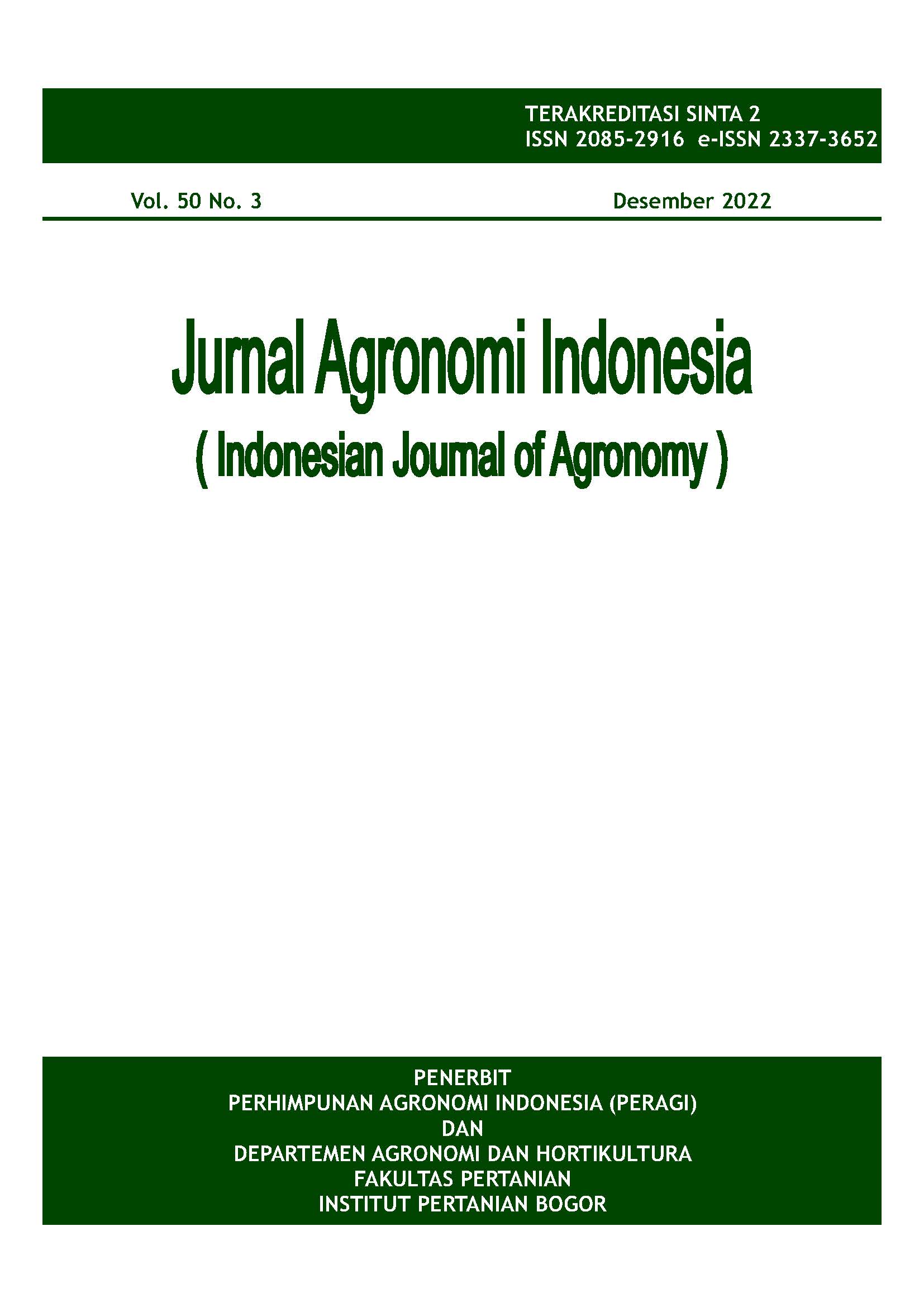Self-Pruning Assesment on Several Tropical Fruit Species
Abstract
Efforts to reduce the production costs of fruit trees are very important to increase competitiveness. One of the production costs in cultivation is pruning. Self-pruning or cladoptosis has the potential to reduce the cost of pruning fruit trees. However, research on the self-pruning phenomenon is still very limited to horticultural crops. The research aimed to identify the occurrence of self-pruning incident in fruit trees to explore their potential to reduce pruning activities. Observations used a randomized block design with a single factor, namely six species of fruit tree (avocado, citrus, guava, kapulasan, longan, and tamarind. Fruit plants aged 2.5 years were maintained in drum pots. Observations included canopy size, branch size, and self-pruning events on branches. The results showed that there was self-pruning on secondary branches, tertiary branches, and quarter branches on all tree species. However, each species has a tendency to self-pruning on different branches. In avocado, self-pruning occurred in secondary and tertiary branches. Self-pruning of tertiary branches occurred in litchi plants. In other plants, self-pruning occurred on all types of branches. This study is the first to observe self-pruning in fruit trees. Further research is needed on the factors of self-pruning variables in fruit plants.
Keywords: abscisions, canopy architecture, cladoptosis, horticulture, senescence













